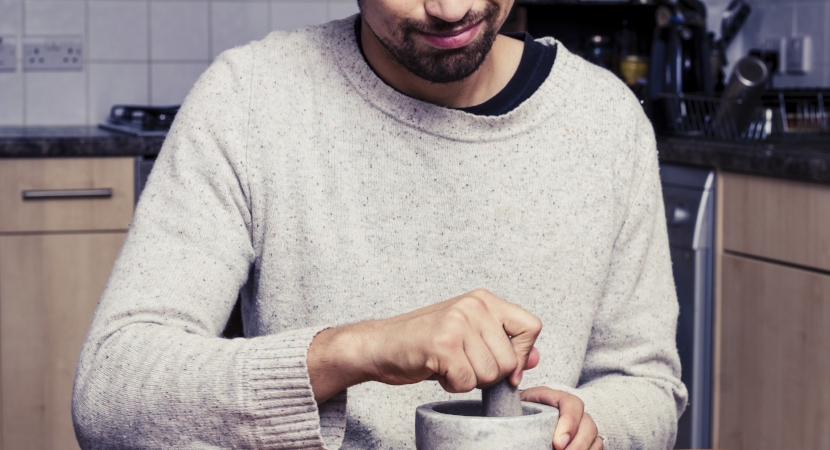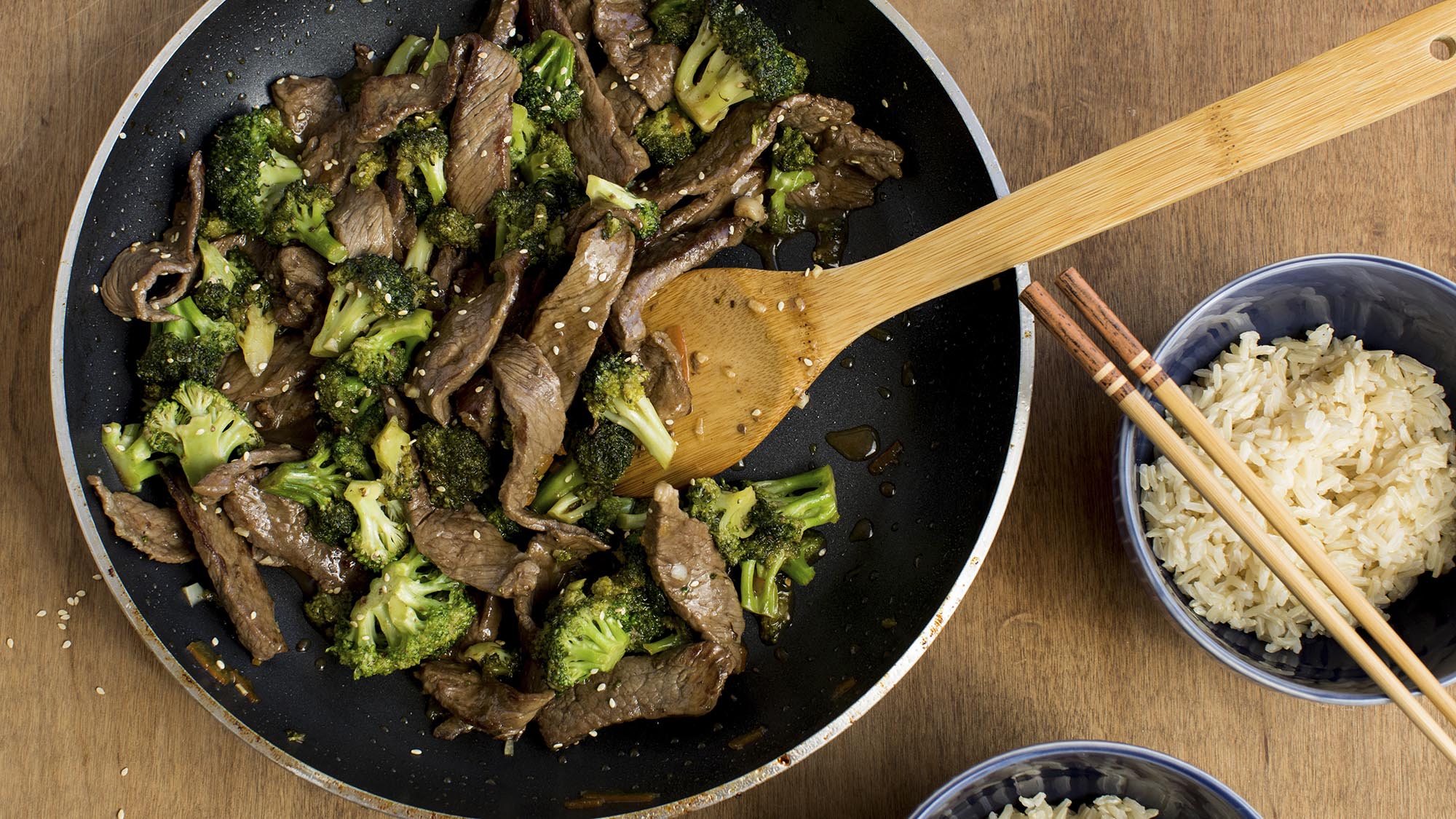When I first moved to New York, I was hungry for everything—and so I ate it all. At a tiny Korean restaurant tucked between a comic shop and café on St. Marks Place, I discovered bibimbap. On weekends, a dozen friends and I would cram ourselves into long wooden tables and order kimchi pancakes, spicy Korean fried chicken, and steaming bowls of bibimbap.
Bibimbap traditionally arrives tableside in a hot stone pot called a dolsot. The base is filled with rice and topped with an array of vegetables and meat. Right before serving, the chef cracks an egg over the top. You mix the egg into the rice with chopsticks, helping it cook and letting the runny yolk sauce your rice. These traditional stone pots retain heat exceptionally well: The residual warmth crisps the bottom and sides of the rice into a crunchy, golden, paella-like crust.
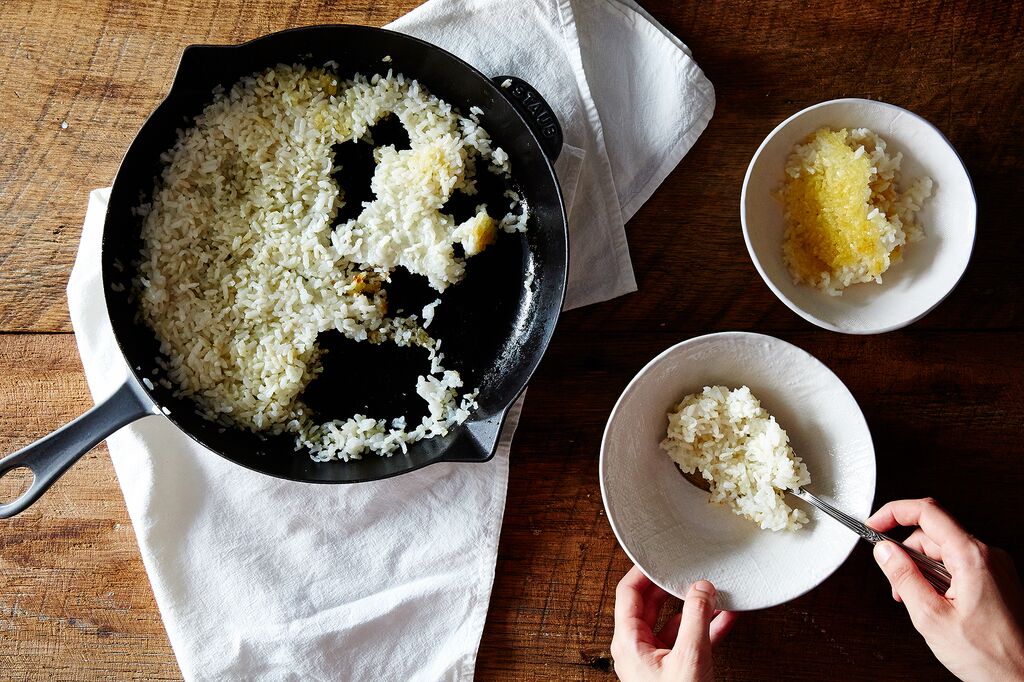
Cooking everything in one pot allows flavors to meld together nicely, so it’s perfectly adaptable to whatever mood you’re in. That said, you can also make the components separately and dish them out into separate bowls; it makes for a prettier presentation.
While this dish is technically Korean, the technique for one-pot, egg-topped crispy rice can fit any cuisine. Make an Italian version with rice, pancetta, basil, and tomatoes. Go Chinese: Add peppercorns, snow peas, sesame seeds, and tamari. You could use za’atar, eggplant, chickpeas, and lamb for a Middle Eastern rendition.
Whatever flavor way you go for, the first step is to gather your rice, vegetables, protein, and some fun toppings:
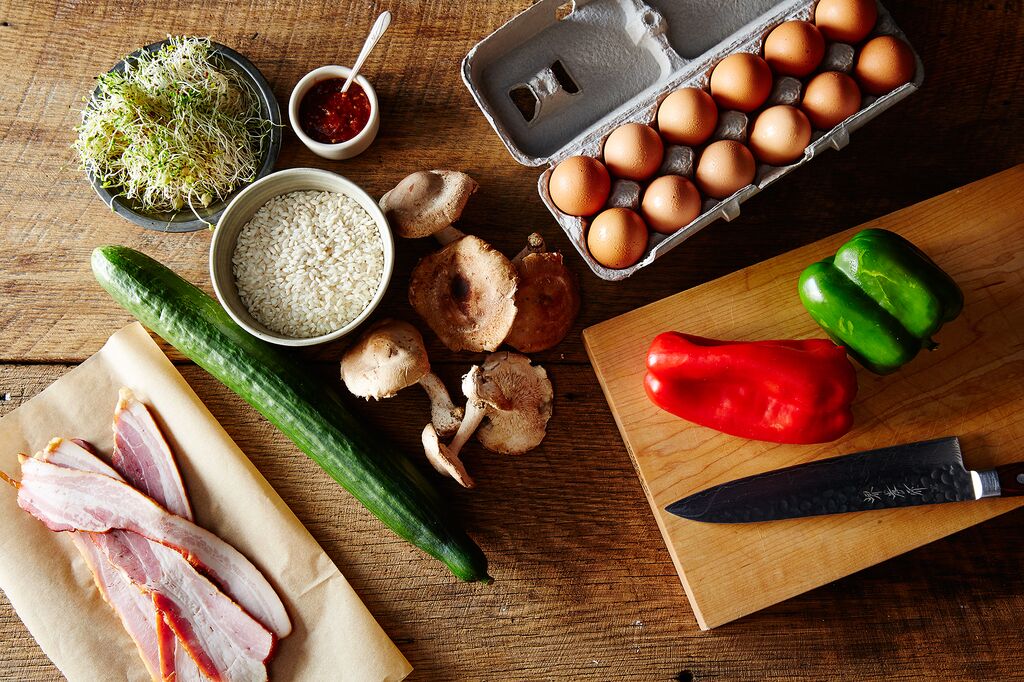
Rice
Cook your rice. I like to use white sushi rice because it crisps nicely, but any variety will work.
Vegetables
In a separate pan, cook your vegetables however you want them to be cooked. You can lightly sauté them in olive oil, blanch them, steam them, roast them, or even leave them raw. It’s entirely up to you—they will all get folded into the final dish. I like to leave some of my vegetables a little crunchy to add texture to the soft rice. Some ideas:
- Soy sauce-glazed snap peas
- Grilled shiitake mushrooms
- Sesame carrots
- Thinly sliced bell peppers
- Raw zucchini ribbons
- Cucumber matchsticks
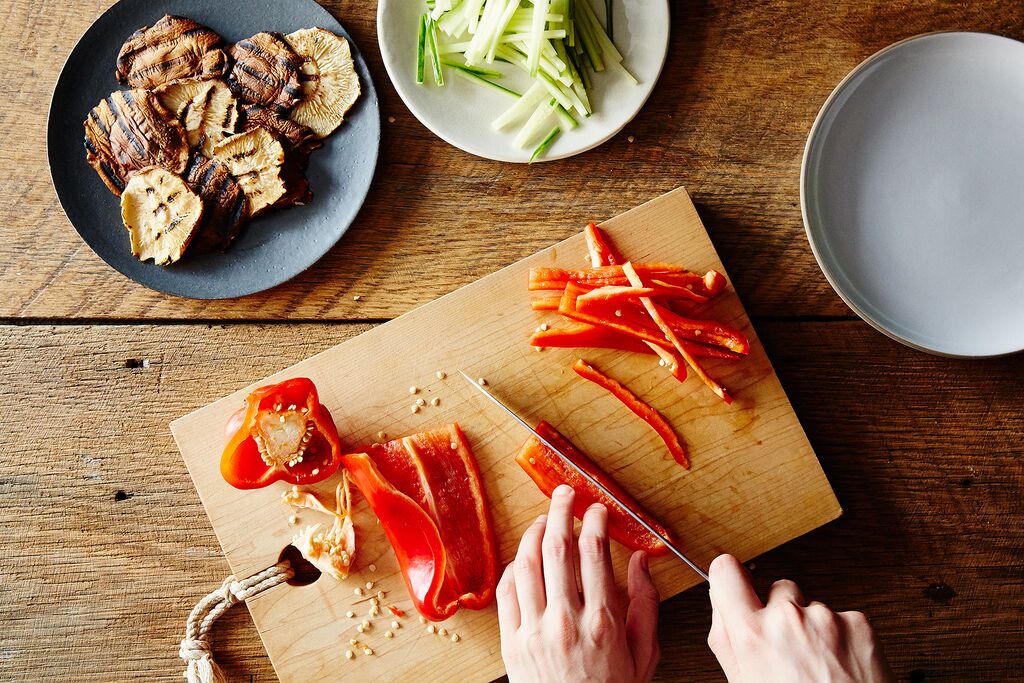
Protein
Thinly sliced steak, cubed lamb, pulled pork, or even shredded rotisserie chicken are excellent options. Plan to cook it before it gets mixed with the other components. I always include crispy diced bacon because I like bacon in everything. If you want to go vegetarian, consider creative ways to bulk up the bowl like crispy chickpeas, fried eggplant, or marinated tofu.
Toppings:
Bibimbap is all about texture: soft cooked rice, crisp rice crust, crunchy vegetables, chewy meat, and saucy egg. Layer on even more texture with your toppings. Try ingredients like bean sprouts, sesame seeds, or shredded dried seaweed if you are going with Asian flavors. Some sesame oil and hot sauce over the top before serving.
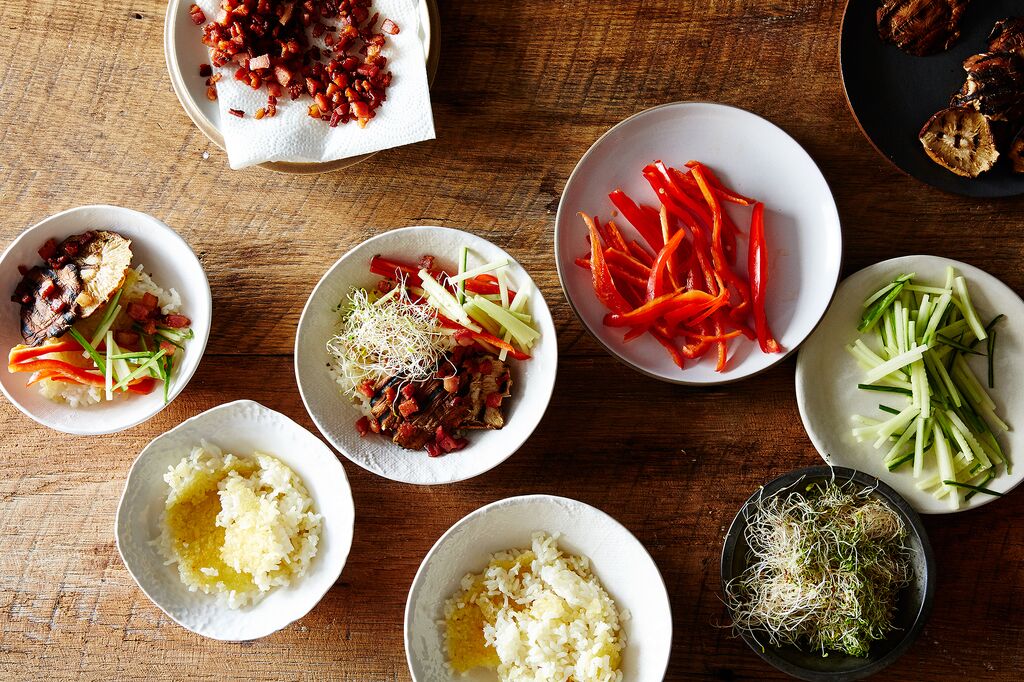
Here’s the fork in the road. Choose to make bibimbap in individual bowls (like we've done here) or in one big pot:
Method 1: Bibimbap in Bowls
Serving bibimbap in individually plated bowls is a prettier method (and nice for entertaining). The difference in method is you crisp the rice and cook the eggs separately, then compile everything in bowls. Once the rice is cooked, heat oil in a cast iron skillet, paella pan, or heavy-bottomed pot. Add the cooked rice and let it crisp up on the sides and bottom for a few minutes.

Spoon the cooked rice into each bowl. Top with your cooked vegetables and meat, then add toppings.
Fry some eggs (one per bowl). Cook them until the whites are just set and the yolks are still runny. Top each bowl with an egg, a drizzle of sesame oil and hot sauce, and serve. Use chopsticks to break the yolk and mix all the ingredients together.
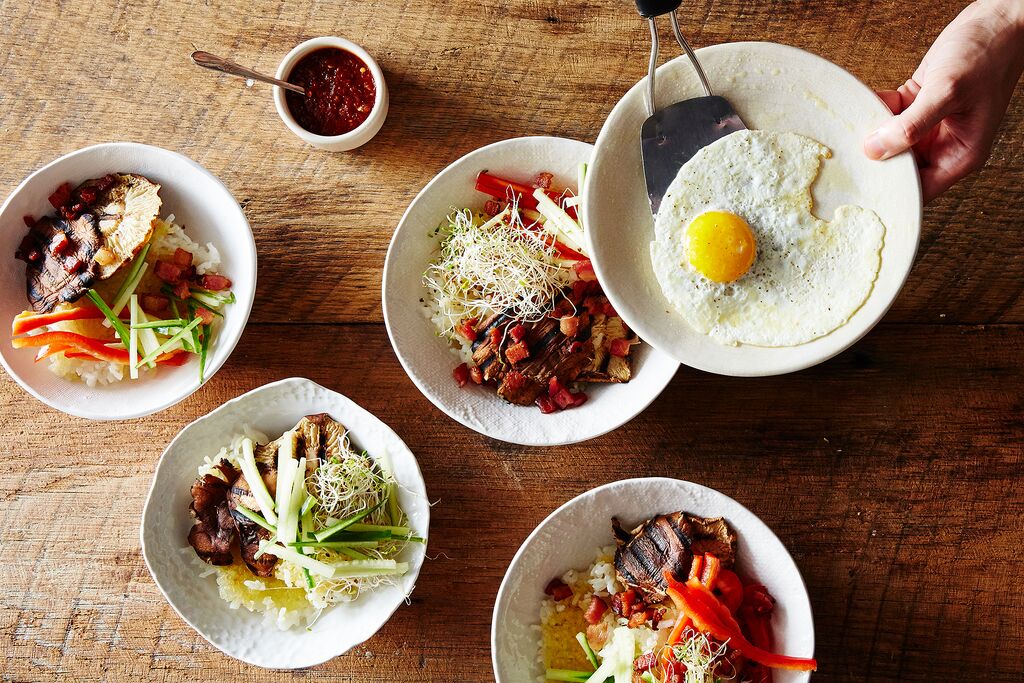
Method 2: Bibimbap in a Pot
Here, everything cooks together in one big pot. Choose a heavy-bottomed pot with a lid. If you have a large enough cast iron pan or paella pan, use that. A Dutch oven will work. A traditional dolsot or stone pot is ideal, but not necessary.
Heat some oil in your pot until very hot. Add the cooked rice and cover, letting it cook for a few minutes. Next add the vegetables and meat. Crack an egg (or multiple eggs depending on how many people you are feeding) over the top. Cover the pot and remove it from the heat.
Keep the pot covered for a few minutes to allow the egg to start to cook. Remove the cover, and stir it all together before serving.
Either way, you'll end up with a variety of flavors and textures that'll make you realize bibimbap is the new (or the original?) grain bowl.
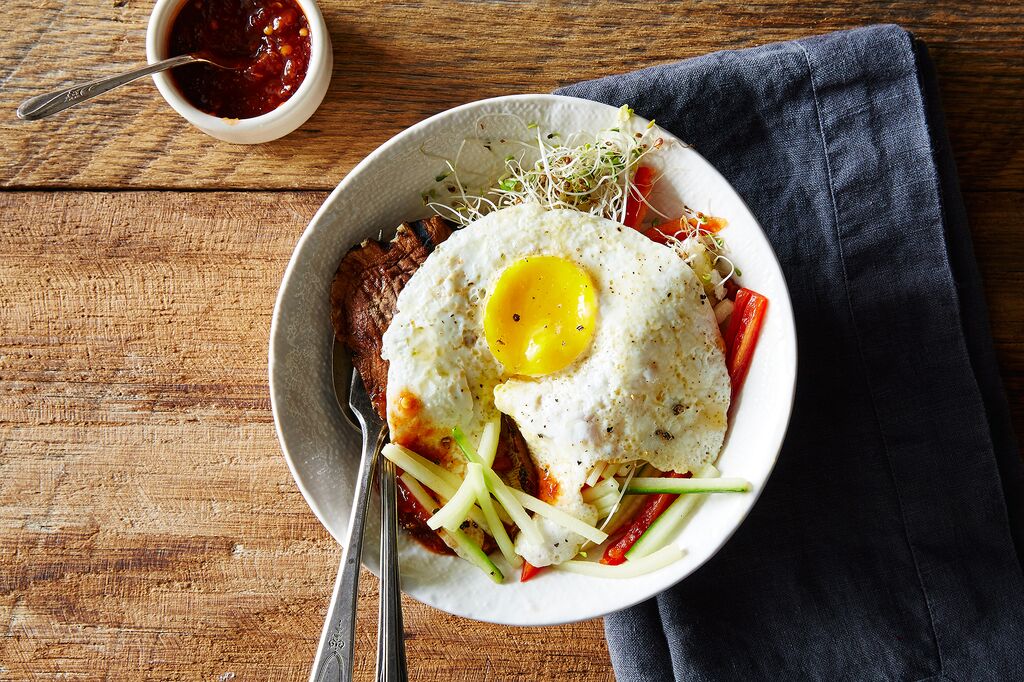
Photos by James Ransom
This article was written by Posie Harwood from Food52 and was legally licensed through the NewsCred publisher network. Please direct all licensing questions to legal@newscred.com.



